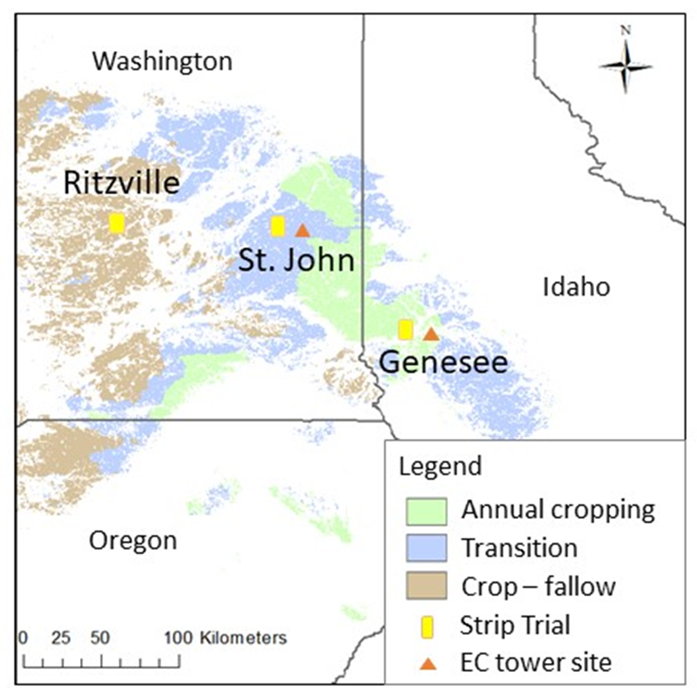Introduction
In the Inland Pacific Northwest (IPNW), where annual grain production value exceeds $500 million, agriculture is vital to the economic stability of rural communities and, in turn, to the stability of the region as a whole. The IPNW's various climatic zones exemplify global agricultural regions in which farmers rely on summer fallowing – the practice of periodically leaving a piece of farmland uncultivated – in order to conserve precipitation in the soil profile. As the map below illustrates, fallowing is employed at different rates throughout the region depending on each distinct zone’s annual rainfall.

Because of wind erosion, soil degradation and the potential for increased greenhouse gas emissions, all of which are associated with fallow land, fallowing is a practice with limited sustainability, especially while current climate models predict that the IPNW will warm by more than 3°C before the end of the century. In order to adapt to a variable climate, it is necessary to increase the resilience of rain fed wheat-based cropping systems through diversification and by identifying alternatives to summer fallow rotations.
Landscapes in Transition (LIT) is a USDA-funded, Coordinated Agricultural Project with integrated research, extension and education components. Our project aims to guide ongoing agricultural land use change in the IPNW toward sustainable, resilient landscapes and food systems by using interdisciplinary collaboration and research. In order to gain a systems-based understanding of the impacts of crop diversification, the LIT project employs a committee of scientists, farmers and other stakeholders in the local agriculture industry (see organizational chart).
This website highlights the LIT project's work, outputs and impacts. Navigate through the tabs above to learn more.
Project Goals
- Help farmers diversify wheat-based farming systems to increase soil health, profitability and resilience, taking into account increasingly variable climates and other environmental and economic sources of change
- Identify key factors that affect wheat-based systems at the landscape scale, and understand the consequences of that land use change
- Within wheat-based system supply chains, identify:
- Best practices to address points of intervention that are most vulnerable to anticipated precipitators of change
- Opportunities to reduce emissions of carbon dioxide, nitrous oxide and other greenhouse gases, by increasing carbon sequestration and improving nutrient use efficiencies
Collaborators
- University of Idaho
- Oregon State University
- Washington State University
- USDA Agricultural Research Service (ARS)